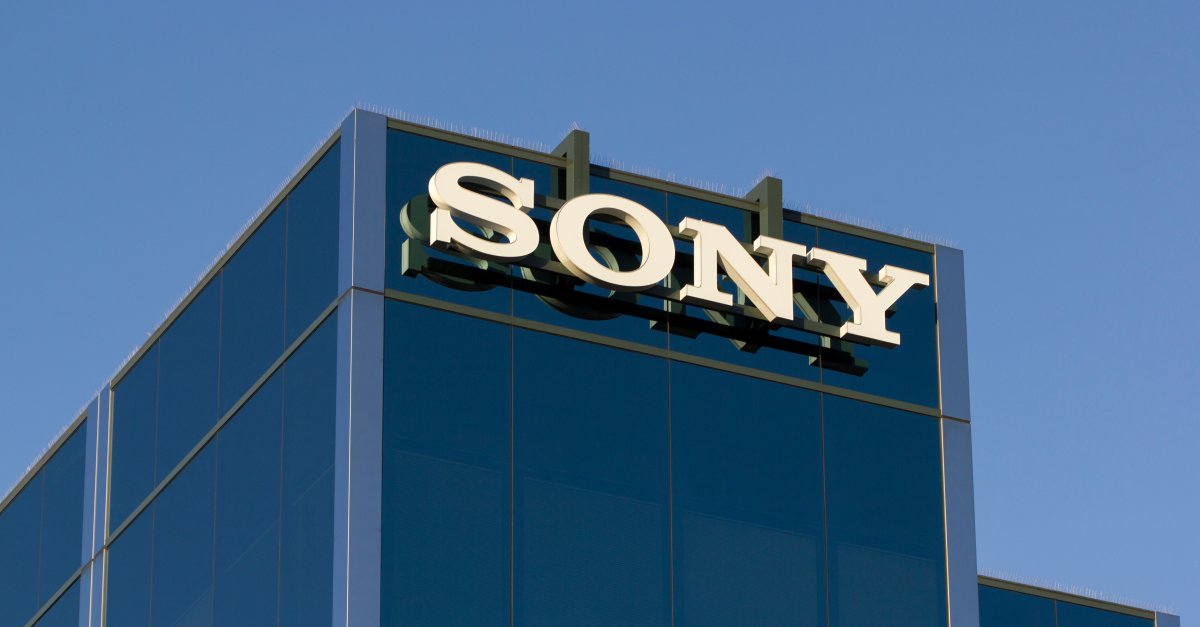Home>Finance>What Is Starbucks Capital Structure Weights In Percentages


Finance
What Is Starbucks Capital Structure Weights In Percentages
Published: December 25, 2023
Learn about Starbucks' capital structure weights in percentages and how they manage their finances in this comprehensive finance guide.
(Many of the links in this article redirect to a specific reviewed product. Your purchase of these products through affiliate links helps to generate commission for LiveWell, at no extra cost. Learn more)
Table of Contents
Introduction
When it comes to running a successful business, one crucial aspect that every company needs to consider is its capital structure. The way a company chooses to finance its operations can have a significant impact on its growth, profitability, and financial stability. In the case of Starbucks, a well-known and globally recognized brand in the coffee industry, understanding its capital structure is key to comprehending how the company manages its financial resources.
Capital structure refers to the composition of a company’s funding sources, including debt and equity. It determines the proportion of each source in relation to the total capital employed by the company. The choices made in capital structure are vital as they influence the cost of capital, risk profile, and overall financial performance of the organization.
The importance of capital structure lies in its ability to optimize financial leverage and ensure sustainable growth. A well-balanced capital structure enables a company to raise funds at a lower cost and utilize its resources efficiently for long-term business expansion.
Starbucks, with its strong market presence and global operations, has implemented a strategic capital structure to support its growth and maintain financial stability. By examining Starbucks’ capital structure, we can better understand the company’s financial decisions and the impact they have on its business operations.
In this article, we will explore Starbucks’ capital structure in detail, focusing on how the company determines the weight of each funding source. We will also discuss the factors that influence Starbucks’ capital structure decisions and analyze the implications for the company’s financial performance.
Understanding Capital Structure
Before delving into Starbucks’ specific capital structure, it is essential to have a clear understanding of what capital structure entails. In simple terms, capital structure refers to the way a company finances its assets through a combination of debt and equity.
Debt financing involves borrowing money from external sources, such as banks or bondholders, with an agreement to repay the borrowed amount plus interest over a specified period. On the other hand, equity financing involves raising capital by selling ownership shares of the company, known as stocks, to investors.
The primary components of a company’s capital structure are debt, equity, and hybrid instruments, such as convertible bonds or preferred shares. The mix of these components determines the capital structure of a company.
One key concept in capital structure is the idea of financial leverage, which is the use of borrowed funds to supplement equity financing. Through financial leverage, a company can magnify its returns on equity and potentially increase its profitability. However, it also increases the risk as the company has to satisfy its interest payment obligations, which can put pressure on cash flows.
Another important aspect of capital structure is the cost of capital. The cost of capital is the weighted average cost of debt and equity that a company incurs to finance its operations. The optimal capital structure seeks to minimize the cost of capital, as it directly impacts the company’s profitability and value.
Understanding capital structure is crucial for companies as it influences their financial performance, risk profile, and flexibility. By choosing an appropriate capital structure, companies can optimize their financial resources and achieve long-term sustainable growth.
Importance of Capital Structure
The capital structure of a company plays a vital role in determining its financial health and overall success. A well-thought-out capital structure can have several important benefits, including:
- Optimal Cost of Capital: One of the key advantages of having an appropriate capital structure is the optimization of the cost of capital. By maintaining a balance between debt and equity, companies can minimize their overall cost of raising funds. Debt financing, in particular, often comes with lower interest rates compared to raising equity capital. This lower cost of capital can result in higher profitability and increased shareholder value.
- Financial Flexibility: A well-managed capital structure provides companies with financial flexibility. It allows them to adapt to changing market conditions, fund growth opportunities, and weather economic downturns. By having access to different sources of capital, companies can strategically allocate funds and make the most efficient use of their financial resources.
- Risk Management: A balanced capital structure helps companies manage risks effectively. By diversifying their sources of funding, organizations can reduce their reliance on a single financing method. This diversification reduces the risk associated with overdependence on a single lender or equity holder. Additionally, an optimal capital structure ensures that the company can comfortably meet its interest payment obligations and debt repayment schedules.
- Enhanced Company Value: An appropriate capital structure can positively impact a company’s valuation. By managing its capital structure efficiently, a company can enhance its financial performance, which in turn can increase its stock price and market value. This can be particularly beneficial for attracting investors and raising additional funds for expansion or acquisitions.
- Competitive Advantage: A well-structured capital base can provide a competitive advantage to companies. It allows them to take advantage of strategic opportunities such as research and development, marketing campaigns, and market expansion. With a strong capital structure in place, companies can invest in projects that enhance their competitive position and differentiate themselves from their competitors.
In summary, the importance of capital structure cannot be overstated. It directly impacts a company’s financial performance, risk management capabilities, and overall competitiveness. By carefully evaluating and managing their capital structure, companies can position themselves for long-term success in the dynamic business environment.
Starbucks Capital Structure
As a global leader in the coffee industry, Starbucks has established a strategic capital structure to support its operations and long-term growth. The company’s capital structure consists of both debt and equity components, allowing Starbucks to optimize its financial resources and manage its risk profile.
Starbucks relies on a combination of debt financing and equity financing to fund its operations and expansion efforts. The company has issued long-term debt in the form of bonds, which provide a source of funds with fixed interest payments over a specified period. By tapping into debt markets, Starbucks can access capital at potentially lower interest rates than other financing options.
In addition to debt financing, equity financing plays a significant role in Starbucks’ capital structure. The company has raised capital by issuing common stock to shareholders. This equity funding provides investors with an ownership stake in Starbucks and allows the company to raise funds without incurring debt or interest obligations.
Starbucks also utilizes retained earnings as part of its capital structure. Retained earnings are the accumulated profits that the company has kept instead of distributing them as dividends to shareholders. By reinvesting these earnings back into the company, Starbucks can finance its operations, open new stores, and invest in innovation and technology.
The specific weight and proportion of debt and equity in Starbucks’ capital structure may vary over time and in response to market conditions. The company closely monitors its capital structure to strike a balance between optimizing its cost of capital and maintaining financial stability.
Overall, Starbucks’ capital structure reflects a prudent approach to financing its operations and growth. By utilizing a mix of debt and equity financing, the company can access the necessary funds while managing its financial risk and maintaining flexibility in capital allocation.
Determining Weight in Percentages
When it comes to determining the weight of each funding source in a company’s capital structure, several factors come into play. The specific weight of debt, equity, and other components can vary depending on the company’s financial goals, industry dynamics, and market conditions.
For Starbucks, the weight in percentages of debt and equity in its capital structure is influenced by various considerations. One primary factor is the cost associated with each funding source. The company assesses the interest rates and borrowing terms available in the debt market to determine the optimal level of debt financing. By carefully analyzing the cost of debt, Starbucks aims to minimize its interest expenses while maintaining a healthy debt-to-equity ratio.
The weight in percentages of equity financing is influenced by the company’s desire to balance ownership dilution and access to capital. By issuing more equity, Starbucks can raise additional funds to support its expansion plans and strategic initiatives. However, excessive dilution of existing shareholders’ ownership can negatively impact the company’s stock price and investor sentiment. Therefore, Starbucks carefully considers the amount of equity issuance to strike the right balance between accessing capital and maintaining shareholder value.
Another factor that affects the weight in percentages of each funding source is the risk profile of the company. Debt financing typically carries higher financial risks, such as interest rate fluctuations and debt repayment obligations. Starbucks evaluates its ability to meet interest payments and manage its debt levels to ensure a sustainable capital structure. By maintaining a reasonable level of debt, the company can mitigate financial risks and preserve its financial stability.
It is also worth noting that companies in different industries may have varying capital structures. Starbucks, as a retail company in the food and beverage industry, may have a different optimal capital structure compared to companies in sectors such as technology or manufacturing. Market conditions and investor preferences can also influence the weight in percentages of debt and equity in a company’s capital structure.
In summary, determining the weight in percentages of debt and equity in Starbucks’ capital structure is a carefully balanced decision that takes into account factors such as cost, risk, and industry dynamics. By evaluating these factors, Starbucks aims to optimize its capital structure and ensure a sustainable financial position for long-term success.
Factors Influencing Capital Structure
Several factors influence a company’s capital structure decisions, including financial goals, market conditions, industry dynamics, and regulatory requirements. Understanding these factors is crucial for companies like Starbucks to make informed decisions about their funding mix and optimize their overall financial structure.
1. Financial Goals: The financial objectives of a company play a significant role in determining its capital structure. For instance, if the objective is to minimize the cost of capital, the company may opt for a higher proportion of debt financing. On the other hand, if the focus is on long-term stability and preserving shareholder value, the company may lean towards a higher percentage of equity financing.
2. Market Conditions: The prevailing market conditions, including interest rates, investor sentiment, and availability of funding, can impact a company’s capital structure decisions. In periods of low interest rates, companies may be more inclined to take on debt as a cheaper source of capital. Conversely, when interest rates are high, companies may rely more on equity financing to avoid excessive interest expenses.
3. Industry Dynamics: Different industries have varying capital structure preferences. Industries with stable cash flows and low financial risks, such as utilities or consumer staples, may have higher debt ratios. Industries that are more volatile or capital-intensive, such as technology or manufacturing, may favor lower debt ratios to mitigate risk and maintain financial flexibility.
4. Company Size and Growth Stage: The size and growth stage of a company can also influence its capital structure. Start-ups and smaller firms may rely more on equity financing, including venture capital or angel investments, to fund their early growth and mitigate risks. Larger, more established companies like Starbucks may have a broader mix of debt and equity financing options available to them.
5. Regulatory Environment: Regulatory requirements and constraints can impact a company’s capital structure decisions. Companies operating in heavily regulated industries may face limitations on the amount of debt they can take on, influencing their capital structure choices. Additionally, regulatory changes or financial reporting requirements can influence how companies structure their capital to comply with regulations and ensure transparency.
6. Tax Considerations: The tax implications of debt versus equity financing can also influence capital structure decisions. In some jurisdictions, interest payments on debt may be tax-deductible, making debt financing more attractive from a tax perspective. However, it is important to strike a balance between tax advantages and the financial risks associated with higher debt levels.
Ultimately, companies like Starbucks carefully evaluate these factors and strike a balance in their capital structure decisions. By considering their financial goals, market conditions, industry dynamics, regulatory requirements, and tax considerations, companies can optimize their funding mix and ensure a sustainable and efficient capital structure.
Conclusion
Capital structure is a critical aspect of managing a company’s financial resources effectively. In the case of Starbucks, a well-thought-out capital structure allows the company to finance its operations, support its growth plans, and maintain financial stability.
Understanding the components and dynamics of capital structure helps shed light on how companies like Starbucks determine the weight of debt and equity in their funding mix. Factors such as financial goals, market conditions, industry dynamics, regulatory requirements, and tax considerations all influence these decisions.
Starbucks has strategically blended debt and equity financing to optimize its cost of capital and manage risk. By carefully weighing the advantages and disadvantages of each funding source, Starbucks can access the funds needed to expand its global presence, invest in innovation, and enhance its competitive position in the coffee industry.
The importance of capital structure lies in its ability to enhance financial flexibility, manage risk, minimize the cost of capital, and increase company value. A well-balanced capital structure enables companies like Starbucks to adapt to changing market conditions, attract investors, and seize strategic opportunities.
In conclusion, Starbucks’ capital structure reflects a careful balance between debt and equity financing, allowing the company to maintain financial stability while pursuing its growth ambitions. By diligently evaluating and adjusting its capital structure, Starbucks can navigate the dynamic business environment and position itself for long-term success.














